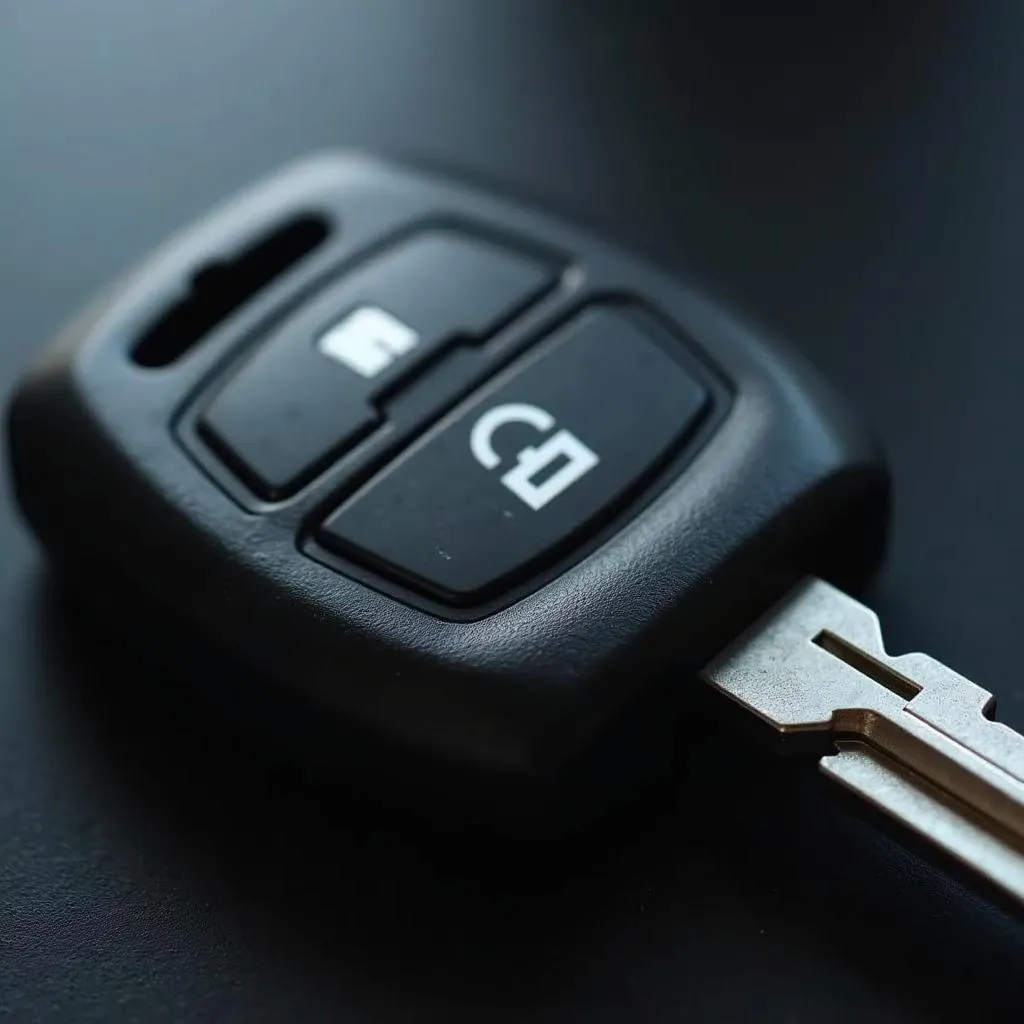Losing or breaking your car key fob can be a major inconvenience. However, getting a replacement and programming it doesn’t have to be a daunting task. This guide will provide you with everything you need to know about how to program a new key fob, empowering you to get back on the road quickly.
Understanding Key Fobs and Programming
Before diving into the programming process, it’s essential to understand what a key fob is and how it works. A key fob (short for “key fob chain”) is a small electronic device that provides remote keyless entry and other functions for your vehicle. It transmits radio waves to a receiver in your car, allowing you to lock, unlock, start the engine, and activate other features remotely.
Programming a new key fob involves synchronizing it with your car’s receiver. This process varies depending on the make, model, and year of your vehicle. Some newer cars have a self-programming procedure outlined in the owner’s manual, while others require specialized equipment and knowledge best handled by a professional automotive locksmith or dealership.
Methods for Programming a New Key Fob
There are generally three main methods for programming a new key fob:
-
DIY Programming: Some vehicles offer a straightforward DIY programming sequence, usually involving a combination of key insertions, door locks, and button presses. You can find these instructions in your owner’s manual.
-
OBD-II Programming: For more complex systems, you might need an OBD-II (On-Board Diagnostics) scanner. This device plugs into your car’s OBD-II port and allows you to access the vehicle’s computer system to program the new key fob.
-
Professional Programming: If the DIY methods fail or your vehicle requires advanced programming, it’s best to consult a professional. Automotive locksmiths and dealerships have the expertise and equipment to program key fobs for a wide range of vehicles.
DIY Programming: A Step-by-Step Example
While the exact steps vary, here’s a general DIY programming procedure that might work for some vehicles:
-
Gather Your Materials: You’ll need your new, unprogrammed key fob, all existing working key fobs, and your owner’s manual.
-
Enter Programming Mode: This often involves turning the ignition on and off a specific number of times or holding down certain buttons on the key fob. Refer to your owner’s manual for the precise instructions.
-
Program the First Key Fob: Once in programming mode, press and hold the lock or unlock button on your new key fob. The car’s system might respond with a sound cue or flashing lights to indicate successful programming.
-
Program Additional Key Fobs: If you have more key fobs to program, repeat the previous step for each one.
-
Exit Programming Mode: Typically, turning the ignition off or pressing a specific button combination will exit programming mode.
-
Test Your Key Fobs: Ensure all programmed key fobs function correctly by locking and unlocking the doors, starting the engine, and testing any other remote functions.
Note: If this procedure doesn’t work for your vehicle, consult your owner’s manual or seek professional assistance.
When to Seek Professional Help
While DIY programming can be convenient, there are situations where seeking professional help is advisable:
-
Complex Programming Procedures: Some vehicles, especially newer models with advanced keyless entry systems, have intricate programming procedures that require specialized tools and knowledge.
-
Missing Key Fobs: If you’ve lost all your working key fobs, a professional locksmith or dealership can cut and program new keys from scratch.
-
Immobilizer Systems: Many modern cars have immobilizer systems that require the key fob to have a matching transponder chip to start the engine. Programming these systems typically requires professional equipment.
-
DIY Programming Failure: If you’ve followed the DIY instructions carefully and your new key fob still doesn’t work, it’s best to consult a professional to avoid potentially damaging your car’s electrical system.
Choosing a Reputable Automotive Locksmith or Dealership
When selecting a professional for your key fob programming needs, consider the following factors:
-
Reputation: Look for reputable automotive locksmiths or dealerships with positive customer reviews and a proven track record.
-
Experience: Choose a service provider with experience programming key fobs for your specific car make and model.
-
Pricing: Get quotes from multiple providers to ensure you’re getting a fair price for the services.
-
Guarantees: Inquire about warranties or guarantees on both the key fob and the programming service.
Maintaining Your Key Fobs
Once you’ve programmed your new key fob, proper maintenance can help extend its lifespan and prevent future issues:
-
Replace Batteries Regularly: Weak batteries can lead to inconsistent performance. Refer to your owner’s manual for recommended battery replacement intervals.
-
Avoid Physical Damage: Protect your key fob from drops, impacts, and exposure to extreme temperatures or moisture.
-
Keep Away from Electromagnetic Interference: Strong electromagnetic fields from devices like microwaves or X-ray machines can interfere with your key fob’s signal.
Conclusion
Knowing how to program a new key fob can save you time, money, and frustration. While DIY programming is possible for some vehicles, seeking professional assistance ensures accurate and safe programming, especially for complex systems. By following the steps outlined in this guide, you can confidently address any key fob programming needs and get back to enjoying the convenience of your car’s remote functions.


